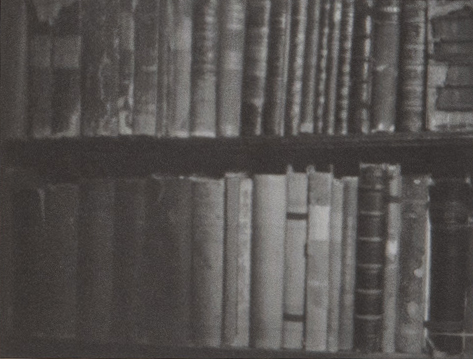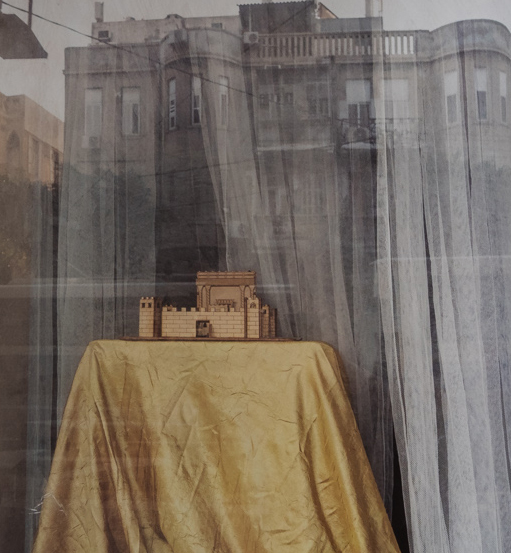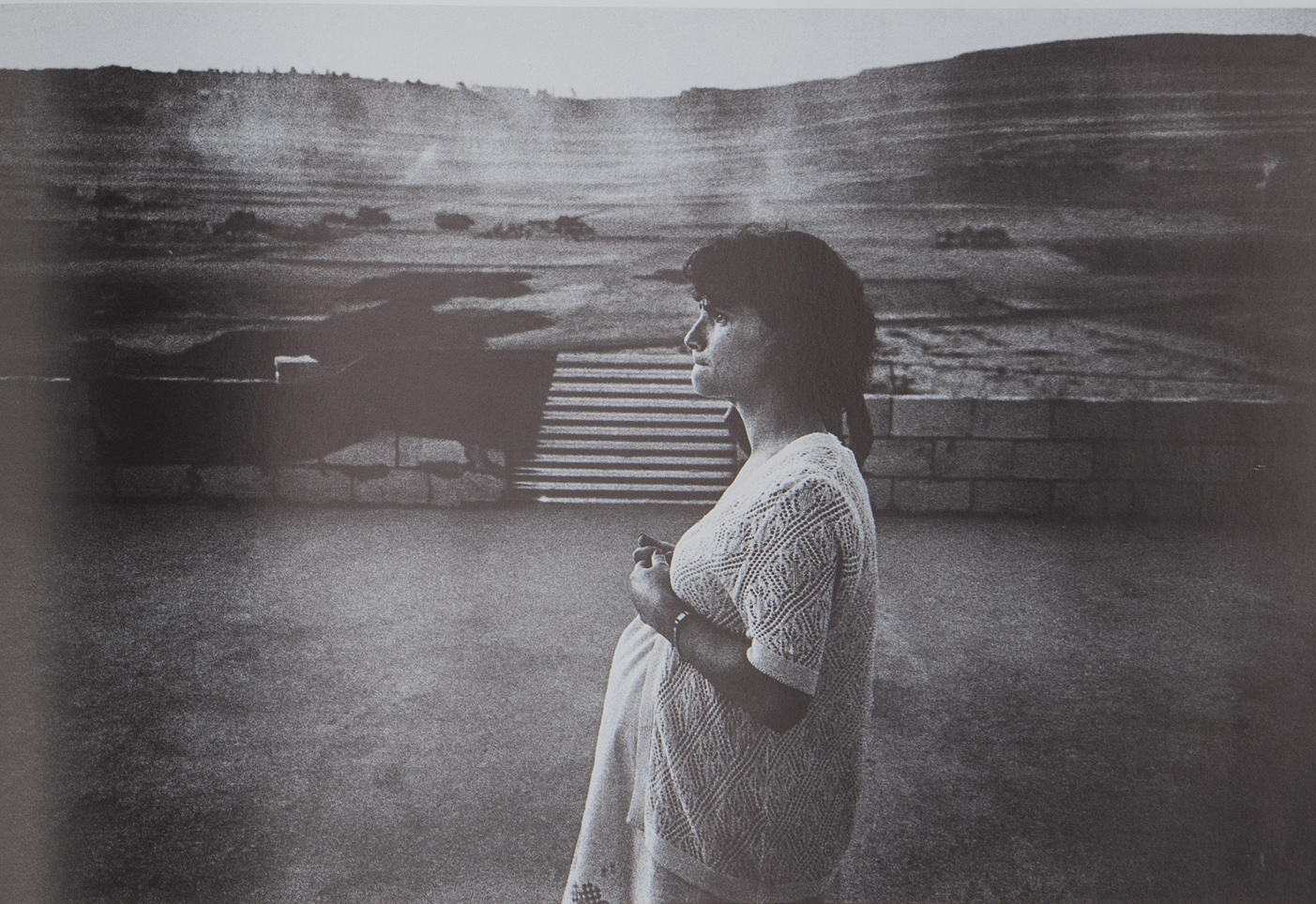How does a book come into the world?
The book began after my father passed away in 2006. During the first year, I obsessively photographed the process of clearing out my father’s things from the family home, and did it in every possible format. It was a real clinging onto things. In 2009, I had an exhibit at the Artists’ Studios, called After All. I thought I would show all the photographs from that year, but during the working process I cleared out everything, and what was left were photos of the empty house. I framed a few large prints and that worked well with the open, simple, gallery space.
I could barely breathe during that exhibition; everything was traumatic. Actually, I felt that it was too soon to display this work. When the exhibition was over, I applied for a budget to publish a book of my works. I couldn’t do anything for two years. Then, I took part in an open studio which was part of the “Love art, Make art” events in Tel Aviv. I hung proofs of works from years before on the walls. In anticipation of the day, I pulled out piles of photos of the house, the whole documentation process from full to empty. It then became clear that this was going to be a book.
The book integrates your photos with spreads from a Brazilian magazine called Manchete. How did you arrive at this particular combination?
During the dismantling of the house, I came across a pile of magazines that my mother had kept. In 1961, my father got a job in Rio de Janeiro fundraising for the Jewish Agency. When I think about it today, it was really crazy, because it was a time when people didn’t fly or travel there much, and we went for a few years. It was a significant experience for me. I only realized how much in hindsight. As a kid, while we were living there, I was addicted to Manchete. It was a newsy, bourgeois magazine that combined tourism, interior design, and leisure.
I knew that something of the experience of leafing through the magazine had to happen in the book, but I didn’t know in what way. I didn’t want an “art” book. When I got to Dana Gez and Nomi Geiger’s studio (Studio Gimel 2), I put all the magazines on their desk. It was clear to all of us that we are about to embark on a process together. When you’re working with a design team that’s attuned to your needs, you gain another head, another body part. You let go of the responsibility of having to make all the decisions yourself. There’s constant dialogue and trust. It’s a gift.
You can leaf through the book from both sides, from right to left and from left to right. From one direction you experience the house being emptied, and from the other being filled. The combinations you made create a constant movement between emptying out and filling up.
We started working, inspired by the magazines, editing the images I had taken inside the house. We also had many photos from family albums, and magazines. We began to realize that we can actually swap between the two, creating a different perception of time. Curator Tali Tamir called it “the fold of time” in her essay in the book. At that point, I began to plant photos of my family inside the magazine spreads, and it became even more enigmatic.
For instance, in the spread where we see the “Sugar Mountain,” I planted a photo of me taken in exactly the same location, at the lookout point. Or a photo of me standing at a gas station with my brother, next to an advertisement from Manchete for the same gas company. Lots of the photos in our family albums were taken using an old Olympus camera and their look is very similar to the magazine. A '70s color palette. There’s me riding a horse, or me and a friend against the background of palm trees like we’re on vacation.
At the same time, it was clear to me that I wanted two-way motion in the book. Towards the end of the process, we understood, that the magazine belongs to the part displaying the full house and that it “empties” out of the book, just as the house in the photos empties of its contents. It’s like Dr. Orly Shevi writes in her essay (“Expanses of Time: About the Photographs of Galia Gur-Zeev”), the photos are like a labyrinth. Every time you look at a photograph, or leaf through a family album, you’ll remember something else. Like flashbacks in movies. I wanted the experience of flipping through the book to be like that. The sort that mixes up my own memory.
Even today when I look through the book, I don’t remember its structure by heart, and this is exactly what I wanted. The experience of leafing through a magazine or comic book—that was my education as a child. It’s like a meditation, I flip through and after an hour, I can do it again. There’s no sense of satiety, no stopping. I can leaf my way to death.
The book’s pages are also thin, like in a magazine.
I wanted them to be the thinnest possible. This tactility motivates me. The sort of paper that Elle Decoration uses isn’t available in Israel. We checked and found a paper that was slightly heavier. Listen to the sound. It’s beyond words.
The preoccupation with sensation and experience reminds me of a lovely sentence you wrote in one of the spreads: “Every time I enter the house, for a split second there’s a feeling that someone’s home.” The familiar experience of being home pours into the experience of mourning. The book is a kind of “grief work,” but also a reflection on family life, gender roles, bourgeoisie, colonialism, Zionism. Do all of these “live” in the book?
Look, we moved to Brazil from Kiryat Shalom (south Tel Aviv). It’s a culture shock on levels you can’t explain. The language, the colors, the carnival, and seeing a Black person for the first time. I remember that before we left I was “prepped,” not to point at Black people. While we were working on the book, I realized this is visual DNA that’s living inside me.
The trip exacted a high price, in terms of family. My brother didn’t stay. He went back to Israel to live with our grandparents. Our parents didn’t want to go there, but it was a living. When we returned to Israel, my father was offered the option of going back again, but he didn’t want to. So, on one hand, there was a financial need, and on the other, there was ideology, and also freedom among the palm trees. My mother kept herself busy with crafts. In Israel, she ran the education department and ulpans (Hebrew language learning centers for immigrants) at the Tel Aviv municipality, and in Brazil, she was on vacation. She painted pottery, arranged flowers, and sewed. She was very creative and the house was full of her work.
This reminds me of the film The Return by Andrey Zvyagintsev. It’s a very harsh movie about a father who takes his kids on a journey and one of them is always taking photographs. At the end of the movie, in the background of the credits are the photos that the child took and you see beautiful frames of a happy trip. There’s something of this in the book as well. I didn’t directly address the Zionist or imperialistic aspect, but it’s there, as is also the aspect of the class.
For instance, I planted pictures from Israeli embassy events in big corporate ads from Manchete. Or a photograph of my dad with a drink, next to an ad for an expensive whiskey. There’s no bottom line here. There’s the complexity of life. We lived on a mountain whose edge marked the beginning of Brazil’s favelas. It was a huge dissonance.
Is this why you decided not to mark when you appear in the book?
One of the most difficult decisions I had was whether to write when it’s me, or someone from the family appearing in the photographs. I understood that if I reveal this information, the book becomes a private album. I didn’t want that. By the way, at the beginning of the book, we made a small index and anyone crazy enough to “decode” the mechanism will find the clues there.
What does “Toda Vida” mean?
I had many rough drafts for the name of the book. We ended up calling it Toda Vida, with an asterisk that references the Hebrew translation, which reads as follows: “Portuguese: all your life / all the way till the end.” In Hebrew, “Toda” with the accent on the second syllable, reverberates the word “thank you” meaning thank you for the life given. In Brazil, when you ask for directions, you’re answered with “Toda Vida and then left,” meaning, drive all the way to the end and then take the turn.
What was the mood board for this book like?
Magazines like Time, Newsweek, and Interview. Another book that was an inspiration for me is Kaddish by Boltanski. It’s the size of a phone book and is filled with photographs. It mixes up the faces of German Nazis and other populations. Also a kind of grief work.
Who would you want to leaf through the book?
I’m not sure I have an answer to that. Actually, I know. Hiroshi Sugimoto, Jeff Wall.
Who did you dedicate the book?
Let’s check. Wow, I didn’t remember that I had dedicated the book to my parents. Look at that, amazing. It’s so sad for me that they can’t see it.
Which book should we add next to our library?
Family Meal by Nurit Yarden, and Vertical by Raanan Harlap.
Where can we get the book?
On my website, on the Sternthal Books website, and at the Migdalor bookstore in Tel Aviv.

























